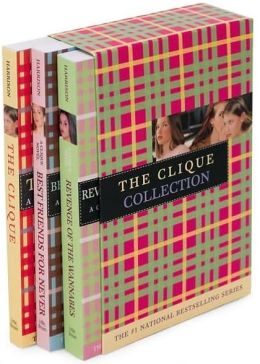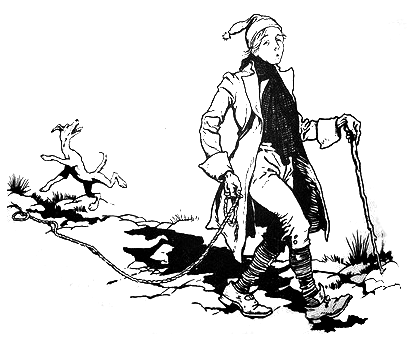You might think that, because I'm a bibliophile and a librarian, I'm the kind of person who always leaves the movie theater grumbling that "the book was better." I'm not, and there's a very good reason why: books are an entirely different medium from film. It's like comparing apples and oranges.
 |
| The apple is film, because it takes less effort to consume. |
It's easy to see why certain changes and omissions are made. The Harry Potter and Lord of the Rings movies would be impossibly long if they filmed the story line-by-line from the book.
+1.jpg) |
Anyone who tells me this could have been improved
by the inclusion of Tom Bombadil will be fed to the Balrog. |
But then you have instances like I Am Legend. I'm not talking about the 1964 film (The Last Man on Earth) or the 1971 film (The Omega Man). I'm talking about the 2007 version with Will Smith.
 |
| That's the one. |
I haven't seen the aforementioned older film adaptations, but I feel like they had to be closer to the book than this one, because I'm pretty sure The Avengers had more in common with Richard Matheson's novel than this film did.
 |
| Tony Stark would wither and die without ladies to woo, though. |
Let's look at what the novel and film had in common (now would be a good time to stop reading this post if you want to avoid spoilers):
- The main character is named Robert Neville.
- There are zombie-like creatures caused by a disease outbreak. They can be killed by stakes to the heart, or sunlight exposure.
- Neville's wife and daughter die(d).
- Neville has a canine companion at some point, for some reason.
- Neville runs across a living female at some point, for some reason.
- Neville makes an attempt to understand/cure the disease.
That's it. Those are the only things I found in common between the book and the movie. That sounds like enough, right? Well, let's look at some of the differences:
The setting. Book: LA. Film: NYC.
No big deal, really. This is one of those understandable changes. We like to see post-apocalyptic movies set in New York. I suspect it's because NYC is so full of national icons, and part of the fun of post-apocalyptic movies is seeing familiar landmarks in ruin.
 |
That was the driving force behind the majority
of Cloverfield's ticket sales |
The bad guy. Book: Ben Cortman is a former friend of Neville's, turned zombie-creature, and he tries to evoke a response from Neville on a nightly basis, torturing him psychologically (in an attempt to get a chance at torturing him physically). Film: No Ben Cortman; just anonymous hordes of zombie-creatures.
I feel like Cortman's presence is one of those things that sets this zombie story apart from a lot of other zombie stories. Sure, some of them touch on the idea of seeing former acquaintances or loved ones zombified (28 Days Later comes to mind, with the girl's father succumbing to Rage right before their eyes) but this one interacts directly with our protagonist on a regular basis and contributes significantly to the story.
 |
| This is not Ben Cortman. This is the nameless 'leader' of the bad guys. |
The dog. Book: The dog is a stray who wanders, hungry, near Neville's yard. Neville coaxes it closer with food and water, fears for its life (was bringing it closer a good idea, with Cortman leading zombies to his door every night?), and mourns its disappearance when it leaves him. Film: It's the family dog and has a horribly sad death scene that makes more people cry than every Oscar winner combined.
Okay... I get this, too. While the book's dog is subtly touching and tear-inducing, the film's version is better at evoking a stronger emotional response from a wider audience. This is how you adapt a story element to your medium.
 |
| Changing the dog's story was worth it just to have this still. |
The ending.
I won't go into detail about the endings, because if you haven't seen/read one or the other or either, you should do so on your own without my interference. But suffice it to say that the film's ending is a pathetic cop-out that takes no risks and is not interesting in the bloody least, whereas the book's ending was a well-written surprise with a real message to deliver.
 |
| No, wrong, stop it, no no no, wrong, no. Just... no. |
I know it probably sounds like I'm hating on the film version, and I'm really not. Remember? I said I enjoyed it. It's like an alternate universe version of the novel. (Which is how I think of it to keep myself from being too confused.)
But realistically, books and movies are different methods of story-telling, and should be viewed as such. That's why screenplays are not just a reformatted copy of the book. They have their own authors (who, yes, can sometimes be the same author who wrote the original text).
So, what if you like the movie better? Well, I can't really say I blame you. Movies have a lot of advantages, particularly for a mass audience.
Music. If you don't already realize the impact music has on a movie, start paying attention. There's music in scenes you probably never noticed the music in. Obviously, musicals rely heavily on music, but so do all other movies.
 |
| That's why John Williams is the man. |
Even the absence of music is important. It can make a creepy scene creepier, an important scene more important, a lonely character lonelier, and a loud noise louder.
Imagery. This doesn't apply to readers with vivid imaginations, but there are a lot of people who just don't mentally translate words to images well. They read something like the pages-long description of Mordor in Lord of the Rings and see separate pieces: strongholds, towers, Mount Doom, a bunch of orcs running about. But in less than a second, Peter Jackson can just go, "This," and show you what it looks like, and you get it.
 |
Pictures: I've heard they're worth a thousand words.
In Tolkien's case, it's more like 5,000 words.
He's wordy, is what I'm saying. |
If you aren't the kind of person who imagines what something looks like in great detail while reading (like me, usually) then movies can fill in that visual gap for you.
Time. It's a sad truth, but if you ask someone why they don't read more books (or any books, I guess), they'll usually tell you it's because they're too busy and don't have the time.
Movies are typically limited to a couple hours or less. Books can take days to finish, depending on the book and your reading speed. If we're talking about movies that have been released to DVD or Netflix or whatever you use to watch movies at home, you can also usually multitask while you watch it; not often true of books. So if you want to hear a certain story, the movie is usually your less time-consuming option.
 |
| There's an exception to every rule. |
So I guess my point is, whenever you find a movie - like I Am Legend - that is completely different from its book, or one - like Harry Potter - that tries to get as much of the source material included as possible but has to make some changes for practical purposes, keep in mind that books are not movies and movies are not books. It's fun to see a director/producer/actor's take on existing material, and if you don't like it, the book is still there for you to enjoy. (Or they'll remake it in a couple years anyway.)
















+1.jpg)




















